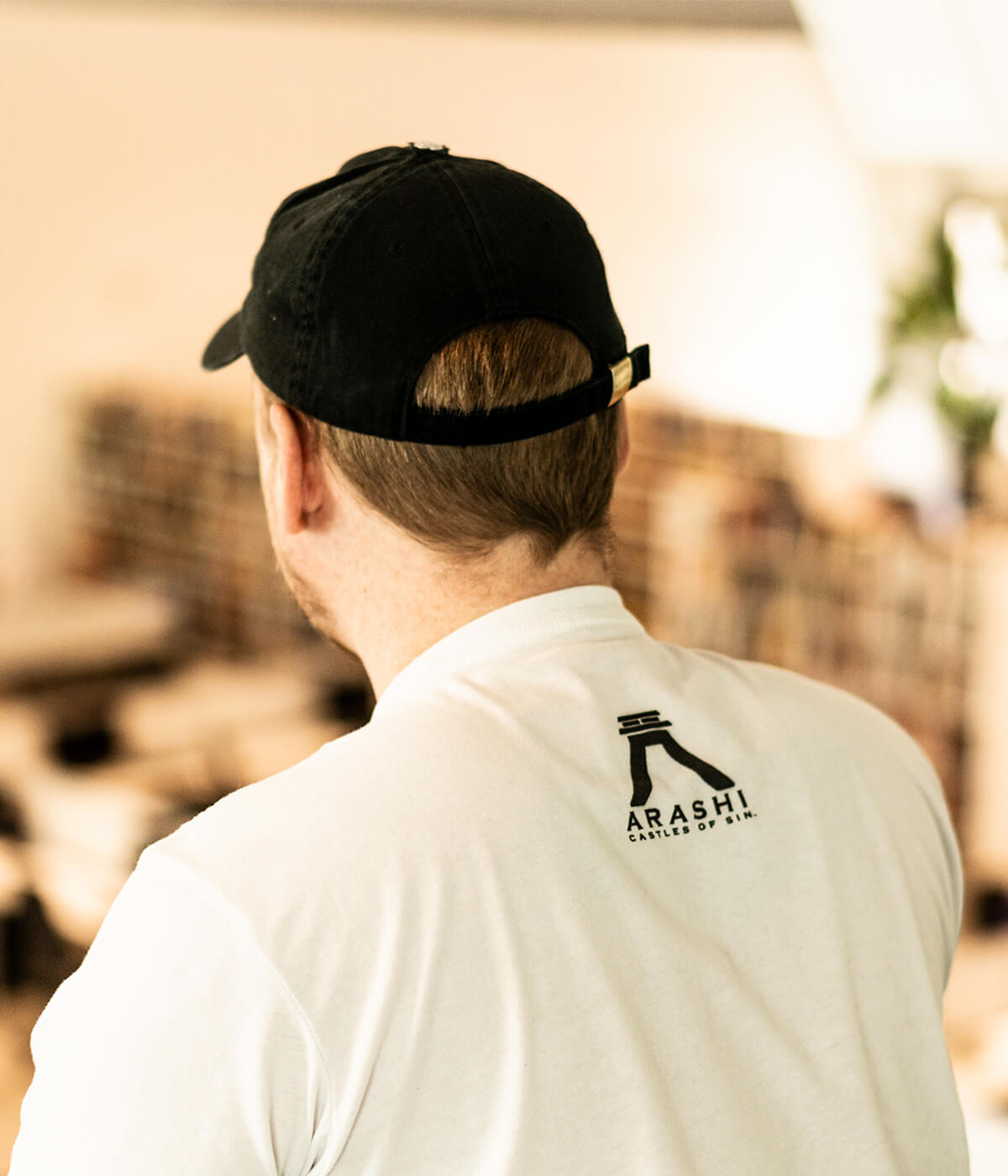Among his many distinctions, Pat Jandro is one of the few DigiPen instructors students are likely to see wearing spandex and doing aerobics in class. “I put on a mocap suit and students directed me on what kind of run they wanted to capture,” Jandro says of a recent session of his ANI 397 course. “One student was like, ‘OK, be sneaking around, and then get really scared!’ Later in the semester for another project, I did flips on a trampoline.” Those suited-up stunts serve as raw material for Jandro’s Advanced Physicality in Animation class, where BFA in Digital Art and Animation students dig into realistic body mechanics and work with motion capture technology.
Before he put on the suit and taught BFA students, Jandro was a DigiPen BFA student himself — a 2008 graduate of the program’s very first cohort. “I always knew I wanted to be an artist. I mailed lots of fan art to Nintendo Power magazine growing up,” Jandro says. When he first found out about DigiPen, it was the school’s Redmond address that caught his interest. It was the same city where he’d sent all those Nintendo drawings as a kid.
After getting accepted to DigiPen, he quickly found himself very close to the action — right on top of it to be exact. “At the time we were doing classes in the extra office space above Nintendo of America’s warehouse facility,” Jandro says. “It was a small group, but we were super close as a BFA cohort. A lot of trust and camaraderie really formed.”
Fresh out of DigiPen, Jandro landed his first job as a cinematics animator at Bungie. Over the next 12 years, he would go onto become a senior in the role, working on cinematics for Halo 3: ODST, Halo: Reach, and every single Destiny game and DLC from the series’ debut through 2019.
At first, on Halo 3: ODST, Jandro’s cinematics were all ‘hand keyed,’ meaning the animation was done manually. In order to achieve the studio’s long-term goals of creating film-quality cinematics, however, Jandro and his teammates soon began exploring new techniques. “At Bungie I had to make a career out of believable, stylized realism,” Jandro says. So, he decided to turn to motion capture, or “mocap” for short. “We taught ourselves,” Jandro says. Without a dedicated mocap technician, mocap actors, or a mocap studio at the time, Jandro and his Bungie peers took a more DIY approach. “We went to the test lab and put up a big black curtain,” Jandro says. “The testers would be sitting there trying to do their jobs on one side, while we were jumping around making alien sounds and war cries on the other.”
Through time and lots of experimentation, Jandro honed the mocap skills and techniques he teaches DigiPen students today. “I just really like this idea of working on top of mocap, and learning how to make it not feel like mocap by animating it further,” Jandro says. “A lot of it is about pushing weight and physics in really simple ways.” Jandro first received his invitation to teach DigiPen’s Advanced Physicality in Animation Class when he was still at Bungie in 2016. Initially, the class didn’t feature motion capture, but given the huge role it was playing in his professional life, Jandro was eager to incorporate it. “Bungie is a very philanthropic place, so I asked our mocap tech if she’d mind shooting some extra clips with our actors for the class,” Jandro says. “They went, ‘For DigiPen? Heck yeah!’ Everyone wants to help do stuff for DigiPen. It’s such a cultural force in game dev.”
Today, thanks to Jandro’s influence, mocap is front and center throughout the entirety of ANI 397, serving as a vital starting point for the advanced physicality he helps students achieve. “We learn how a mobile mocap setup can work without needing to rent a warehouse of technicians and $2 million-worth of hardware,” Jandro laughs. Students learn how to process and animate on top of mocap footage using the 3D software Maya, beginning with motions as simple as a run, and gradually working towards a highly kinetic, three-part parkour scene by the end of the course. “Sometimes the mocap footage I give them purposefully won’t be full coverage. I want them to be able to hand key if need be, because you often do need to for your scenes,” Jandro says. “Your capture might be all sorts of broken and poppy when you merge it all down in Maya, so we learn how to hand key, clean it up, and really push the animation.”
Students focus on animating two-legged beings in the course, but since Jandro began teaching, he’s become a master of four-legged mocap as well. Since 2019, he’s been the lead animator at Seattle-based VR studio Endeavor One, where he recently helped ship the award-winning ninja adventure Arashi: Castles of Sin. “In our game, your main companion, Haru, is a wolf,” Jandro says. “Early on, we all just agreed, yeah, we need to mocap this!”
After a day of studying wolf behavior and movement patterns at an Anacortes sanctuary called Predators of the Heart, Jandro partnered with Vancouver, B.C. based mocap studio Beyond Capture. Together, they recorded clips of three trained dogs who, yes, wore doggy mocap suits. “One of the initial performers was an actual half-wolf, half-German shepherd mix,” Jandro says. “Between the mocap canines and sanctuary wolves, I got to work with some of the same fuzzy actors that starred in shows like Game of Thrones and True Blood.”

The biggest challenge of doggy mocap? You can’t direct a canine actor like you would a human. “They can sit and jump on command, but you can’t say, ‘Hit this mark right here, look around, wait five seconds then act sad!’ You have to let them do their thing and work with what they give you,” Jandro says. To get the physicality and motion he wanted for Haru, Jandro had to carefully line up and match the action of many separate clips from the session, take them into Maya, and hand key the frames until it felt realistic. “Now, the core of that experience is the base of my final curriculum for the class,” Jandro says.
While working closely with man’s best friend on Arashi: Castles of Sin, Jandro also worked closely with one of his actual best friends, Forrest Söderlind, with whom he shares an equally rich bond. Not only is Söderlind Endeavor One’s technical animation lead, as well as a former decade-plus artist at Bungie — he’s also a fellow 2008 graduate of DigiPen’s first BFA cohort. “We teamed up recently at the studio for a virtual class where we walked the students through the mocap suit-up process and the software,” Jandro says. “Forrest being former DigiPen too, he was just like, ‘This is awesome!’”
The BFA program has evolved a lot in the 14 years since his graduation, but Jandro says he still sees a lot in common between then and now. “We just had our first face-to-face class a week ago because of the pandemic, and all my students were going out of their way to help each other,” Jandro says. “That openness harkened back to the experience of close friendship I had in my cohort. I love getting to pay it forward and do what I can to inspire the next generation.” Getting to use his mocap prowess to help students grow at DigiPen is rewarding in itself, but Jandro says his years of animating body mechanics has also led him to acquire a very particular set of skills — useful for certain yard games. “Since I’ve studied precision and physicality in motion for so long, I’m an ace at cornhole now,” he laughs.
